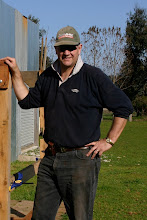This afternoon I went back to the English village from where, in April 1841, my great great grandfather John Holdaway set out for New Zealand.
John was an agricultural labourer living with his wife Mary and 4 children in the village of Lasham in the County of Hampshire. Youngest of the children was James (5 at the time) – who was my great grandfather.
John left Lasham with his friend Thomas Creswell to take up employment with the New Zealand Company. They travelled to London and on to Gravesend where they embarked on the Whitby on 28 April 1841. Their wives and children followed – setting sail on 24 September 1841.
Lasham, then and now, was / is in an agricultural area. John and Thomas were landless farm labourers and poor enough to find attractive the idea of travelling to the other side of the world - to what? They had no capacity to type ‘Nelson’ into Google or Google Earth and see what the future might hold for them. They had only the flowery plans and promises of the New Zealand Company agent from the nearby town of Alton. Plans and promises about a settlement that did not yet exist.
That they became pioneers of Nelson, I am grateful for. So today I returned to Lasham some 170 years after they left. I came armed with the results of researches by a number of people: Ted Holdaway, my mother Mary Holdaway – and some additional guidance from my brother Alan.
Alan said we had to come by car – so we came by train. We arrived in Alton – with Lasham 3 or 4 undulating miles away. Taxis were hard to come by so we bought an Ordinance Survey map and started studying the foot paths.
Fate then intervened in the form of a driverless cab outside a betting shop. Kristina can persuade most people to do anything she wants – and so it was again. The off duty cabbie left his slot machine and drove us to Lasham.
We went to the Royal Oak and had a very nice lunch. A plan formed. I had found a footpath on the OS map that led pretty much straight from Lasham, via the village of Shaldon, to Alton. Is it not possible that John and Thomas might have passed this way as they left the place their ancestors had inhabited for centuries – never to return?
I don’t know this – and I don’t think anyone will know. If that is not the path they took on that occasion, they certainly must have taken it on others as they talked to the New Zealand Company agent in Alton and supplied him with the material that established their suitability as settlers.
Anyway we decided we would recreate the first small part of their journey and walk the footpath to Alton.
The path actually starts right where John and Mary are believed to have lived before they left – just north of the church in a lane known as Common Way.
It was a lovely walk – mainly downhill the way we did it. It took us a hour and 40 minutes.
We looked for old oak trees that might have already been there when they left. Here is one candidate just at the start of the journey.
We looked for old oak trees that might have already been there when they left. Here is one candidate just at the start of the journey.
John's grandson (my grandfather) was a great tree man - though I have to say, his taste was for fruit trees or eucaplyts rather than oaks.
The path got a bit overgrown in places. I was wearing shorts and crocs - so my legs got a light exfoliation by bramble and stinging nettle.
We crossed fields of rape and wheat. The wheat in John's day wouldn't have been the short stemmed, heavy headed stuff we saw, but he would have passed (in April) fields of young crops.
My legs were a bit weary towards the end, but spirits were lifted when we crossed a field with a big mob of working horses. They were beautiful.
We had a lovely day for our walk. It was in the low 20s I guess with a gentle breeze. No one would want to ever leave England on such a day.
I'm going to encourage each of my children to try to make this walk some day - in the footsteps of their forefathers. I'll make up a map and set of instructions for any of the descendants of John Holdaway who want to do so.
I'm going to encourage each of my children to try to make this walk some day - in the footsteps of their forefathers. I'll make up a map and set of instructions for any of the descendants of John Holdaway who want to do so.
F








No comments:
Post a Comment